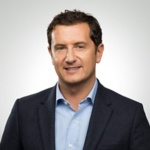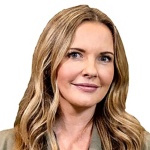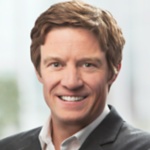Siemens Healthineers AG is the parent company for a number of medical technology companies and is headquartered in Munich, Germany. With more than 50,000 employees in 75 countries, the business is one of the leading names in the medical technology industry. In March 2018, the company completed its initial public offering—one of Germany’s largest IPOs of the last decade—and all against the backdrop of a hugely disruptive healthcare industry. Andre Heinz, global head of human resources at Siemens Healthineers, talked to me about the changing face of the healthcare industry, the role of technology and people in transforming it, and the importance of culture in changing how businesses operate.
Not just in Germany, but seemingly the whole world over, the healthcare sector is going through immense change. How do you see that developing, and what are the opportunities for organizations in such a climate?
It’s an extremely dynamic market, and there is a lot of upheaval. We’re also seeing a lot of consolidation, so the classic, small, rural hospitals we may remember from our childhood are becoming less and less common. In Germany, they are being replaced by large hospital chains, such as Fresenius or Alpha, and the aim of these large hospital chains is to industrialize the healthcare industry, with the goal of improving quality of patient care. These organizations are looking at how they can standardise traditional therapies, such as stroke therapy, and deliver them as cleanly as possible.
I also think about this from a data perspective, as these services, from CTs, MRIs, ultrasound, X-rays, and other laboratory diagnostics all create digital data, so digitization is another important area. How we use that data to determine which therapy is most effective for which patient is crucial, and personalised medicine is at the centre of all of this.
How do the changes in the healthcare sector and digitization more broadly impact the way you think about operating?
Our customers are looking for us to be a solutions business—they don’t just want to buy a device; they want to talk about how we can help them improve processes to make their hospital better. I think, above all, the way we work is changing. Namely, when we move from a product business to a solution business, what happens there is that many decisions move much closer to the customer, because together with the customer, the need is there to create an individual solution. This effect leads to an incredible increase in complexity. You have to consider things like, how concrete is your HR strategy.
For us, that means we need different competencies, such as advisory, clinical, and digital competencies. The crucial question is or was for us as a company, how do I deal with this complexity. A classic industrial company would have looked at increased complexity and said,“We need more policies and more controls.” We really wanted to go the opposite way. We want to give more responsibility where the decisions have to be made and thus promote a completely different approach to trust and corporate culture.
That’s a brave shift away from a culture of control to a much more democratic management structure. How do you manage such a shift in culture and make it work?
There are three steps. In the first step, we looked very closely at how we actually organize work. We’ve seen, in many conversations with managers, that the classic organizational structures, with a marketing department, a product department, an R&D department, did not work for us, and we needed a much more fluid approach, or a project structure that would give us much more flexibility. Next, we asked our employeesover 30,000 of them for their views, and another 5,000 potential employees outside the business, as the goal was to become an attractive employer.
This was exciting, and you learn a lot. And while employees of different ages and demographics want different things, somethings were common across all groups. They want autonomy. They want more responsibility, and they want to be able to learn continually across their careers. The final element is deciding what you want your people to be, that is, what kind of employees and humans you want to have working for you. We decided we wanted to be an employer that trusts, that empowers, that grants autonomy, not watches over its employees like a parent/child relationship. That approach takes a big shift as it changes how you manage your HR and people processes, and we had to change them.
Could you talk to us about how you go about changing those HR and people processes you were talking about?
I think the big thing for us is moving from classic goal-setting processes and annual performance appraisals, to a more continuous, ongoing model where employees and leaders sit together regularly to think about how we are implementing strategy. We also replaced our annual incentive bonus with a shared incentive for all that is more ad-hoc, because we decided that the annual bonus did not inspire creativity or better work. We also rethought how we approached career development, helping employees be more autonomous in their plans and giving more flexibility for moving across the business into different roles.
And, how is Workday helping to drive some of those process changes and help Siemens Healthineers transform the way it operates?
The first thing is that if we had stayed with our legacy system, we would have had to recreate 300 HR systems worldwide. If you have 50,000 employees, that doesn’t make sense. We had two important goals. The first was to have one system of record for all employee data, and that meant standardising processes and moving away from the past with its highly-customised way of working. The second strategic goal was that I wanted to have a modern, cloud-based IT system that really delivers a whole new user experience and helps me to truly implement that autonomy and flexible working we need.
With Workday, our CEO can request employee feedback on certain experiences, such as meetings or other events. Also, employees can now nominate themselves for roles on Workday. They can go into the org chart and say I want to move to that position or participate in the following talent programs. And the data is then recorded in development rounds, where we then discuss with executives how we actually develop teams. That is powerful.
Technology continues to evolve at an unprecedented pace. How will emerging technology drive Siemens Healthineers in the future?
I think what’s going to happen is that the organization is going to change a lot. We’re experimenting with new agile working methods across various parts of the business, really clean methods to help us get new products to market faster via very-fast sprints. That’s very promising, but also demands some caution, because agility should not be a euphemism for chaos. When things get chaotic, people complain, and they question the organization’s agility. This way of working demands discipline.
From an IT and HR perspective, I think digitization will become very important for the organization. Workday is the backbone of my data and the core component of our HR ecosystem. Workday calls it the power of one, and that’s exactly what it is–all our HR data in one place. What we are looking at next is how we build our own ecosystem with the many available apps out there that we want to layer on top of Workday to deliver more autonomy for employees and drive even more efficiency across the business.







